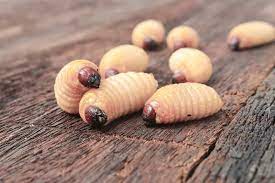Sago caterpillar: ALTERNATIVE LOCAL FOOD SOURCES OF NUTRITION POST PANDEMIC FAMILY

Downloads
The existence of sago caterpillars as an alternative source of animal protein brings its own color in food diversity because it is unique and potentially available in sago crop areas. Sago caterpillars are included in the class of food ingredients that are easily damaged, so it is necessary to carry out an innovative processing, one of which is by using a vacuum dryer to maintain shelf life and aesthetics so that it is easily accepted. During the pandemic, animal food sources have increased in price, so it is important to look for other rich local foods. protein, amino acids, zinc, minerals, albumin, are needed to increase the body's immune system and maintain stamina. The purpose of introducing sago caterpillars in the community as an alternative source of animal protein during the pandemic. This research is a descriptive qualitative approach, namely to obtain information about the use of sago caterpillars as a food source. The results of the chemical laboratory analysis of sago caterpillars studied from the Wolasi sub-district of South Konawe Regency showed that the average water content of fresh sago caterpillars was 57.92%, total energy 265.67 kcal, protein 8.52%, total fat 20.07% and carbohydrates 12, 74%. While the mean water content of dry sago caterpillar was 4.31%, total energy was 374.80 kcal, protein was 16.66%, total fat was <0.02% and carbohydrates was 77.04%.. In conclusion, in terms of nutritional content, sago caterpillars have the potential to be an alternative source of animal protein
Copyright (c) 2022 Trees Trees

This work is licensed under a Creative Commons Attribution-ShareAlike 4.0 International License.











